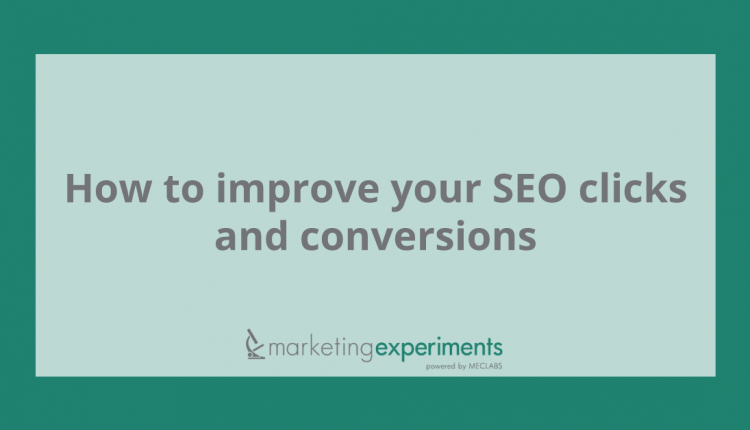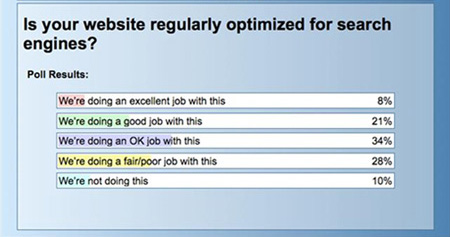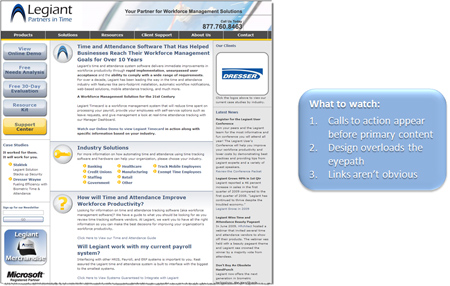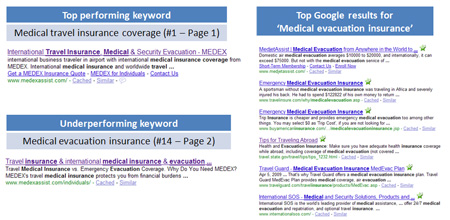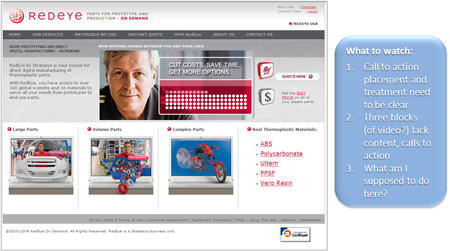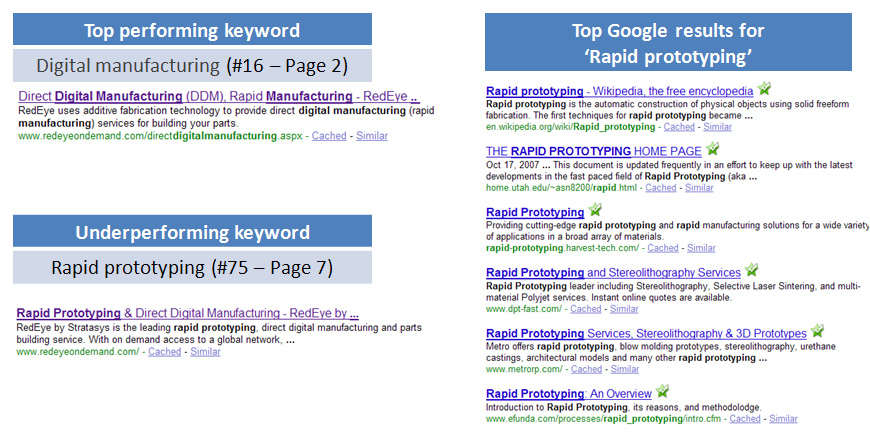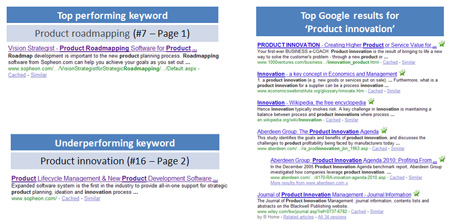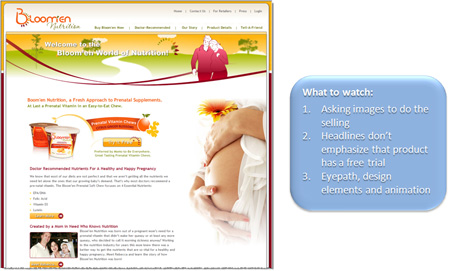Organic search results not only attract far more clicks than PPC ads, they’re also seen as more credible.
Locking in a top-five spot in Google is where you want your site to be – front and center with targeted prospects. Of course, every other marketer is gunning for the same result.
Good news: Your pages may be closer to those high-ranking spots than you think.
For our June 24 web clinic, we invited special guest Paul Taylor to discuss five key SEO factors and show how applying them to real sites from our audience can increase targeted traffic and, ultimately, lift your conversions.
In addition to the print–friendly research brief below, you can:
Research snapshots
To get a sense of our live clinic audience’s experience level with search engine optimization, we conducted a quick poll.
Q: Is your website regularly optimized for search engines?
Of our 692 audience respondents, only 8% said they’re doing “an excellent job” of optimizing regularly. Nearly 40% said they’re either doing “a fair/poor job” or not doing it at all. In general, our clinic audience includes a mix of in-house marketers and agencies, so these numbers suggest there is plenty of room for improvement on both sides.
With those two audiences in mind, we also reviewed research from MarketingSherpa’s 2009 Search Marketing Benchmark Guide. Posed to nearly 4,000 SEOs, both agency and client-side, the following survey asked about the typical SEO lift after six months.
SEO Lift After Six Months of Optimization – Agencies vs. In-house
As the chart above indicates, the reported average SEO lift was 110% for agencies, while those in-house SEOs reported an average 38% lift. The pitfalls of self-reporting aside, the gap in results is an excellent reminder that no matter which side of the fence you’re on, it’s crucial to keep pace with the shifting SEO landscape. Achieving the best SEO results largely depends on how effectively you can apply a handful of core principles and alter them on a consistent basis.
Key point: Once you’re comfortable with the fundamentals of SEO, you need to find ways to stay up to date on evolving best practices. What worked three years or even three months ago may not work now, and misinformation about SEO is rampant.
The challenge – and the opportunity
How competitive has the fight for first-page search results gotten? Today there are more than 14 billion internet searches conducted each month, according to comScore, and Google has reported that its index includes more than a trillion pages. SEO analysis regularly shows 10,000 to 500,000 search results for each keyword.
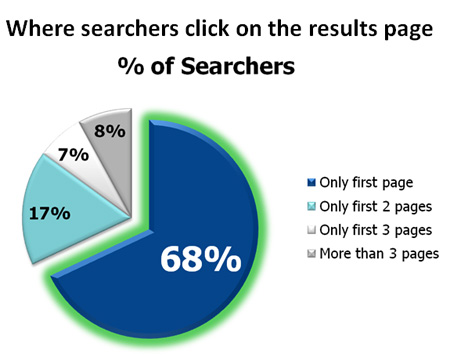
Even tougher is that 68% of searchers only click on the first page of results – and many of those likely won’t scroll down to the bottom. For your site to be seen by the vast majority of searchers, it needs to appear on the first page, if not in the top five to seven results (where many screen resolutions will break the page).
On the other hand, this also means that, with some modifications to your pages, appearing in those top results gives you a substantial advantage for targeted traffic compared to your rivals and a potentially large number of irrelevant results.
Five SEO fundamentals you need to get right
Our web clinic guest presenter, Paul Taylor, reviewed the five fundamentals of organic search engine optimization. Though there are a number of more advanced techniques and tactics to explore, and this briefing barely scratches the surface with SEO, these five factors are at the root of all SEO activity.
Taylor gave a brief overview of these factors, then looked at ways to apply those factors to the pages submitted by our clinic participants.

- Keywords – This is the most important underlying factor contributing to search rank. Once you have identified high-impact keywords, they must be strategically incorporated into site pages in a way that not only suits search engines, but is still useful for real visitors to your site.One of the most critical things to remember: building a concise list of targeted keywords and phrases, drawn from research and analysis, is a much more effective approach than writing up a laundry list of words and cramming them into your code and copy.
- Content – Keywords are useless on their own, so they need to be properly applied throughout site pages to ensure good keyword density. You should also make sure you have enough content pages to rank well. For example, a typical B2B site should have somewhere between 100 to 500 pages of content to rank in the top results.
- Meta content and tags – Search engines read and index the code, or meta content, behind each page. Title tags are a priority area for search engine spiders, and the meta description is what the searcher sees on search results pages below the page title link.
- URL paths – Google also checks URLs, and it is a huge advantage to have a top-level domain that includes a relevant keyword or two. That extends to using keywords throughout a URL in subfolders and page names. The longevity of a top-level domain also plays a role in rankings.
- Inbound links – These links are among the least understood and most underappreciated of SEO factors. “Link juice” can have an enormous impact on your rankings. The most valuable links to your site are from other highly regarded pages and sites that are relevant to your industry. As a rule of thumb, if you’re targeting a competitive keyword, the page of your site that addresses that keyword needs to have roughly 100 pages pointing to it; for a less competitive keyword, fewer links are needed.
Applying the five fundamentals to your own site
During the live optimization segment of the clinic, Taylor and our team looked at how the five SEO factors could be applied to participants’ sites to improve their search rank. The review included an overview of the sites’ best keywords and underperforming keywords as submitted by our audience.
[Editor’s note: This brief focuses on applying the SEO factors and improvements. You can hear additional recommendations for optimizing the page elements for conversions on the full presentation.]
- Optimizing page titles
For this site, submitted by Director of Marketing Jeff Swetland, the target audience is C-level executives, VP-level HR and Operations.
Legiant’s organic search results:
At position seven, Legiant is on page one but still below the fold. The site could boost its current traffic by three to four times by moving up to positions one through four. The keyword phrase “workforce management” is an area where improvement could make a significant difference, because the site currently appears on page three, and as a result, it is practically invisible to 85% of searchers.
A look at relevant keyword rankings helps to clarify the potential opportunity.
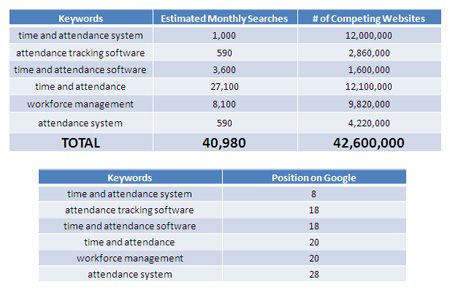
Workforce management products are in demand, with over 40,000 monthly searches, yet there are over 42 million competing webpages. Minor adjustments to Legiant’s page title tags can help.
The current page title is not optimally targeting keywords:
An optimized page title using targeting keywords:
Many of Legiant’s keywords are in an “inflection point” – appearing on page two or three of search results. This means it has momentum and it won’t take too much to move up to page one. After making minor page title tweaks, the site should see an increase in rankings after the next two Google spider crawls (within 60 days).
Key point: Putting your company name in the first few words of your page title squanders the most valuable SEO positions. Many organizations still do this, but those first two positions are critical to your ranking. A search for your company name will already rank your website very high, so use those positions more wisely.
- Optimizing meta descriptions
The MEDEX site submitted by e-Commerce Manager Sharon Mostyn is targeted at people or groups traveling outside of their home country.
Organic search results and keyword rankings for MEDEX:

More than 17,000 potential customers are searching for products that MEDEX offers, according to a keyword analysis. There are also more than 423 million other webpages competing for those same keywords.
We used this site to illustrate the importance of using unique meta descriptions on each page. Here’s an example from the page MEDEX submitted for review:

The keywords in your meta descriptions should be unique to each page. The MEDEX site uses identical meta descriptions on many of its pages – and it is not capitalizing on the opportunity to present unique messaging and keywords relevant to the search results. Because the meta description is what searchers see in results pages, you should treat it like copy for real people.
These meta descriptions are the same for two different pages within the same website. What is optimal is different meta descriptions specific to each page:
Key point: If your pages don’t provide relevant meta descriptions written in a consumer-friendly way, Google will pull page content to appear in the search results under the page title. Think of meta descriptions the same way you would for the copy in PPC ads and take advantage of it by making sure that each page’s meta description is written for people first, and search engines second.
- Using inbound links
Marketing Manager Craig Emerson submitted the Redeye site, targeted at designers and engineers:
Redeye organic search results and keyword rankings:
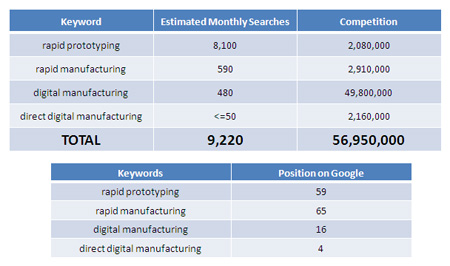
The site appears just above the fold for “direct digital manufacturing”, yet for other more popular terms like “rapid prototyping” the site is practically invisible. Redeye could improve in these areas by focusing on inbound links.

While Redeye has fewer inbound links than its competitors, this says nothing about the quality of the links. A concentrated effort to obtain inbound links can do wonders for your rankings. An additional 100-200 links, if done well, could help Redeye get ahead.
Inbound links can come from a variety of sources, yet not all sites are created equal. Marketers need to pay attention to the weighting of certain links and watch the impact on search ranking.
A few link sources you should consider:
- Links from blogs are helpful, particularly if the blogs are highly regarded and well-ranked.
- E-zine articles can be especially valuable because syndication can create 20-30 more pages from just one article.
- PR websites that publish optimized press releases with links can create a multiplier effect.
- Certain forums and directories that are oriented to SEO are highly regarded by search engines. SEOmoz and SEO Book are good resources for these types of directories.
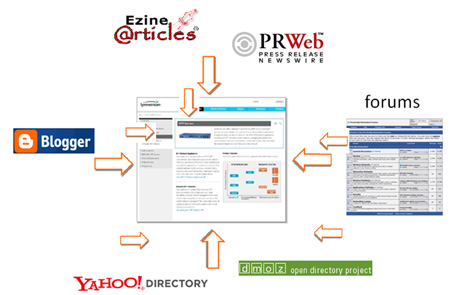
Key point: As you work to establish inbound links, try to direct them to both your landing pages and your homepage. A good rule of thumb is to have about 20% of your inbound links directed to your homepage, with the remaining linking back to landing pages.
Linking best practices include (see image):
- The clickable link text contains your keywords, not the company name
- This is a one-way link from another website pointing back to your website
- Descriptive text surrounding the link also contains keywords
Key point: Internal links are also important. You can maximize your SEO by connecting the pages that focus on each keyword to create content silos.
Internal links will help to:
- Ensure that your website gets properly indexed and that the search engines can find all pages
- Build the relevancy of a page to a keyword phrase
- Increase the PageRank of internal pages
- Selecting high-impact keywords
This site targets R&D VPs and Directors and Directors of Marketing.
Organic search results:

The strategy for this site should be to get as granular as possible with its keywords. The popularity of its keyword selection is relatively low, which is typical for a big-ticket B2B product. With almost as many monthly searches as its entire existing keyword group, the keyword “new product development” should be incorporated into the site.
Key point: Make sure you do a thorough keyword expansion by scouring your competitor sites and noting any keywords you may have missed. You don’t want to leave any popular keywords out, but you also want to ensure you are getting high impact. Once you have expanded your keyword list, boil it down to the 10-20 keyphrases that convert best for your leads.
- Building keywords into URLs
Manager Barrett Niehus submitted the Bloomen Nutrition prenatal vitamin landing page directed at women aged 22 to 45 who are planning to start a family.
Organic search results and keyword selection:
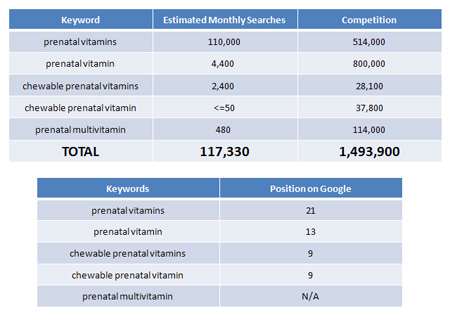
While there are over 117,000 monthly searches for the Bloomen Nutiriton prenatal product, there are over 1.4 million other webpages competing for the same keywords.
Bloomen currently ranks at the top of page three for the keyphrase “prenatal vitamins”, which makes up the majority of searches for this target. With 1.5 million competitive pages it is not as competitive as many other keywords, so a high page-one position is attainable with some SEO fundamentals, starting with placing the keyword in the URL.
In the first three search results for “prenatal vitamin”, each site uses those keywords in the URLs:

Bloomen Nutrition’s current URL for its products page does not use keywords in the URL:
This is how Bloomen should restructure the URL to reap the greatest SEO benefit. It is also a clear indicator to the user and Google as to what this page is about:
Key point: Generic ecommerce and dynamically generated page URLs such as “ProductDetail.asp” won’t help your ranking. With that small URL change Bloomen could easily move up to page two, and by addressing the other SEO factors discussed here, it could move up to page one.
Summary
Do’s and don’ts to help you improve your search engine optimization efforts:
- Stay up to date on evolving best practices for SEO and stick to credible sources of information. You can find a shortlist of top SEO resources on our blog.
- You’re not dreaming up a laundry list of 400 keywords and cramming them all into your code and copy, are you? Build a concise list of targeted keywords and phrases, drawn from research and analysis from free resources like Google Keyword Tool and Wordtracker.
- Don’t waste valuable title tag positions on your company name; save those first few spots for top keywords and add the company name further along in the title.
- Think of meta descriptions like PPC ad copy; even though you’ll want to include keywords, write the copy for people first, search engines second.
- Point inbound links to both your homepage (about 20%) and landing pages (about 80%) to distribute the link juice more widely across your site. Also, use targeted keywords for the linked text instead of your company name.
- Create content silos using internal links to connect pages focused on specific keywords.
- Avoid using dynamically generated and generic ecommerce URLs if possible. Workarounds include static pages, redirects and link reformatting.
- Use keyword tools and competitive analysis to expand your keyword lists for testing. Then after some testing and analysis, narrow the list to focus on the 10-20 keywords and phrases that convert best for your leads.
Credits:
Content — Hunter Boyle
Pamela Jesseau
Paul Taylor (Webmarketing123)
Aaron Rosenthal
Jimmy Ellis
Production — Austin McCraw
Cliff Rainer
Landon Calabello



